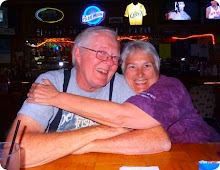Aiken, SC High 71 Low 39
The original depot was build in 1899. New York socialites Thomas and Louise Hitchcock spent the colder months in Aiken and Mr. Hitchcock recognized Aiken was the ideal place to train young thoroughbred horses because the ground never froze and the sand/clay soil provided the perfect footing for the fragile ankles of young horses.
In 1892 they built a thoroughbred training center, the first four holes of Palmetto Golf Club and began putting together land for fox hunting.
The original snowbirds (actually called Winter Colony) started arriving in great numbers. The need for a larger depot became obvious and in 1899 the new depot became a reality. The original building was demolished by the railroad in 1954 when passenger travel to Aiken ceased.

I used a picture from the depot’s website to show the new building.
The Train Museum, located on the second floor, has nine dioramas that depict the towns along the original South Carolina Canal and Railroad Company right of way. This railroad became the first designed steam powered commercial railroad in the United States and the longest railroad in the world at that time.
I loved the idea that this museum gave us lots of little known facts about trains.
There are over 625,000 miles of track in the world which is enough to go around the earth 25 times.
Before Refrigerated railcars, trains delivered milk to big cities early in the morning to avoid the heat. That’s where we get the term “milk run”.
Steam heat and electric lights were used in train cars for the first time in 1887.
Branchville, SC is home to the first railroad junction in the world.
The earliest rails were made from wood covered with an iron cap. Steel rails came into use in the 1870s.
When locomotives were invented, people worried that the human body could not survive speeds over 30 mph.
The Aiken Special – Between the 1880s and 1960, so many northern aristocrats were part of the Winter Colony that they ran the Aiken Special in the Autumn and Spring. Horses traveled in special horse cars that were attached to the Aiken Special.
Did you know that Bisquick got it’s start on a train?

When the salesman returned to General Mills, he took the idea to a food scientist and Bisquick was introduced in 1931.

This was a really interesting little museum to visit and we really enjoyed it.








Interesting. I'm thankful we have museums to remind us of our history.
ReplyDeleteAny more museums and I will start calling you Jan and Bill. ;)
ReplyDeleteThanks for the bit about "milk run". Doug and I are constantly looking up the origin of sayings.